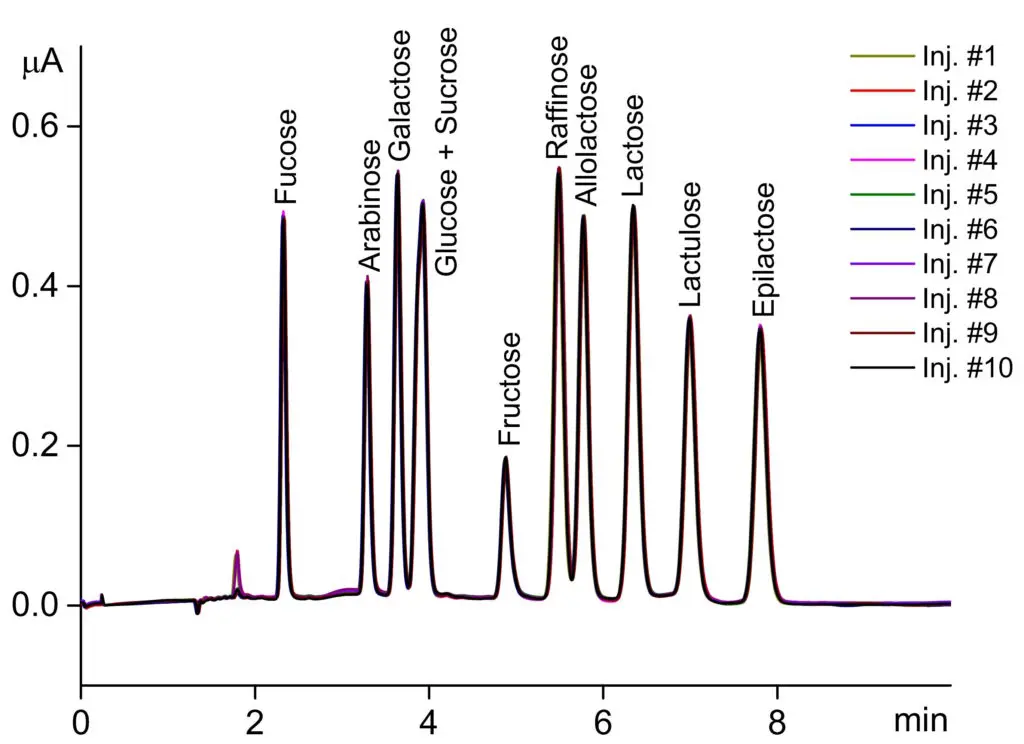Carbohydrates
Carbohydrate analysis
Carbohydrates analysis is of interest to the food industry and to several fields in life sciences. Analytes of interest include mono- and disaccharides (such as glucose and sucrose), oligosaccharides (maltodextrin), polysaccharides (starch, cellulose) and glycoproteins. High Performance Anion Exchange Chromatography in combination with Pulsed Amperometric Detection (HPAEC-PAD) can be used for compositional analysis and quantification of sugars in food and other samples.
The ALEXYS Carbohydrate Analyzer is a fully dedicated HPAEC-PAD system. Application notes below show some typical results for the analysis of carbohydrates in different samples.
For more details,
- Read more about the ALEXYS Carbohydrate Analyzer.
- Read our technology page on PAD.

ALEXYS Carbohydrate Analyzer
System reproducibility – overlay of consecutive injections (n=10).
Food and Beverage
Prebiotics food additives